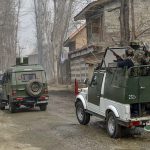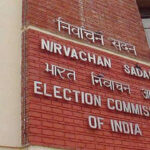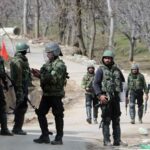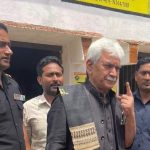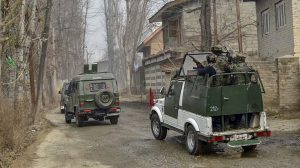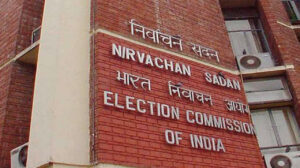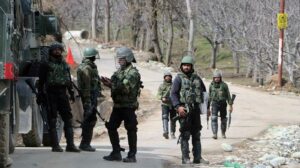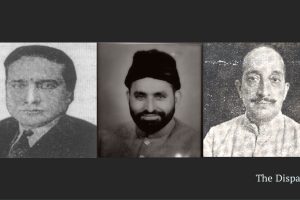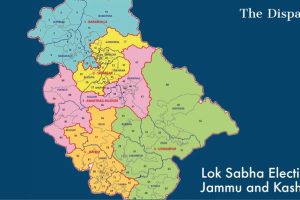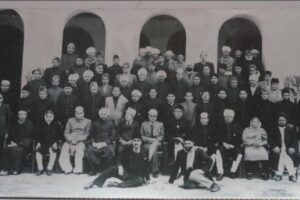The Constitution of India provides for democratically elected governments in States of India. Governors appointed by the Centre act as Constitutional heads and vital link between the Centre and the States. In case of breakdown of constitutional machinery, emergency situations or when they are convinced that no political party or combination of political parties is in a position to form government, the Governor’s recommend imposition of President’s Rule. Since Jammu and Kashmir had a constitution of its own till August 5, 2019, the State, in unique circumstances, would come under Governor’s Rule. Here is a Time of Governor’s Rules in Kashmir with brief background of events.
1977, March: Governor’s rule was imposed for the first time in Jammu and Kashmir on March 26, 1977 during the tenure of Governor L K Jha after state Congress — then headed by Mufti Mohammad Sayeed — withdrew support to the minority government of Sheikh Mohammad Abdullah of National Conference. Sheikh had come to the power following an accord with then prime minister Indira Gandhi in 1975. The Governor’s rule lasted for 105 days and ended as the National Conference founder returned to power in the assembly polls.
1986, March: The Governor’s rule was imposed for the second time in Jammu and Kashmir in March 1986 after state Congress — again headed by Sayeed — withdrew support to the minority Government of Ghulam Mohammad Shah. Shah became the Chief Minister after he led a rebellion with National Conference against his brother-in-law and then incumbent Chief Minister Farooq Abdullah in 1984. This 246-day spell ended after Farooq Abdullah entered into an accord of his own with the then prime minister Rajiv Gandhi.
1990, January: The third time Governor’s rule was imposed in Jammu and Kashmir in January 1990 when Farooq Abdullah resigned as the chief minister over the appointment of Jagmohan as the Governor following eruption of militancy in the state. Mufti Mohammad Sayeed was the Union home minister at that time and had brushed aside Farooq Abdullah’s opposition to Jagmohan’s appointment. This was the longest spell of Governor’s Rule — six years and 264 days — which ended in October 1996 after National Conference returned to power in assembly elections held after a gap of nine-and-a-half years.
2002, October: Governor’s rule was imposed in Jammu and Kashmir for the fourth time in October 2002 after caretaker Chief Minister Farooq Abdullah refused to continue in the office in the wake of his party’s defeat in the assembly elections that year. The 2002 assembly polls threw up a hung assembly with no party in a position to form a government on its own. Mufti Mohammad Sayeed, whose regional PDP had won 16 seats, negotiated an alliance with the Congress and dozen-odd independents to form the government, ending the 15-day direct Central rule on March 1, when Sayeed was sworn in as the chief minister. It was the shortest spell of Governor’s rule — 15 days — as the PDP and Congress with support of 12 independents formed a government on November 2.
2008, June: Governor’s rule was imposed in Jammu and Kashmir for the fifth time for 174 days after the PDP withdrew support to Ghulam Nabi Azad-led Congress-PDP coalition government in 2008. The PDP withdrew support to the government on June 28, 2008 following widespread protests during the Amarnath land row agitation that pitted Hindu-dominated Jammu region against the Muslim-majority Kashmir valley. Azad was to seek a vote of confidence in the Legislative Assembly on July 7 but chose to resign instead.The central rule came to an end on January 5, 2009 after NC leader Omar Abdullah was sworn in as the youngest chief minister of the state.
2015, January: The Governor’s rule was imposed in the state for the sixth time after the assembly election results on December 23, 2014 threw up a hung assembly with no party or combination of parties able to stake claim for government formation and Omar Abdullah, the caretaker chief minister, asking to be relieved from the duties with immediate effect on January 7. The central rule ended after the PDP and the BJP stitched an alliance paving the way for the return of Mufti Sayeed as chief minister on March 1, 2015.
2016, January: The Governor’s Rule was imposed in Jammu and Kashmir for the seventh time on January 8, 2016. Mufti Sayeed’s death was the cause for the promulgation of the Governor’s rule on January 8, 2016 after allies — PDP and BJP– deferred the government formation process till the end of the four-day mourning period. Invoking Section 92 of the Constitution of Jammu and Kashmir, Vohra promulgated Governor’s rule after approval by President Pranab Mukherjee. It was the seventh time Governor’s rule was promulgated in the state since Independence, the first being in March 1977. The central rule came to an end after Mehbooba Mufti was sworn in as the chief minister on April 4, 2016.
2018, June: Jammu and Kashmir was placed under the Governor’s Rule for the eighth time on June 19, 2018, a day after the Bharatiya Janata Party decided to pull out of the Peoples Democratic Party-led state government and Chief Minister Mehbooba Mufti tendered her resignation. Governor NN Vohra, after consultations with all major political parties on formation of government in the state, sent a report to Kovind on Tuesday seeking his approval to imposition of Governor’s Rule in Jammu and Kashmir. Vohra made the recommendations under Section 92 of the Jammu and Kashmir Constitution, which allows the state to be placed under the Governor’s Rule for six months. A month later, the Government of India terminated Vohra’s service as Governor and appointed the then Bihar Governor Satya Pal Malik as new Governor of Jammu and Kashmir who took over on August 23, 2018. Malik was the last Governor of Jammu and Kashmir as under his tenure the State was reduced to the Union Territory and the post of Governor was replaced by Lieutenant Governor. Girish Chandra Murmu took over as the first Lieutenant Governor of Jammu and Kashmir on October 30, 2019. Manoj Sinha, a BJP leader from Uttar Pradesh, replaced Murmu as Lieutenant Governor in August 2020.

